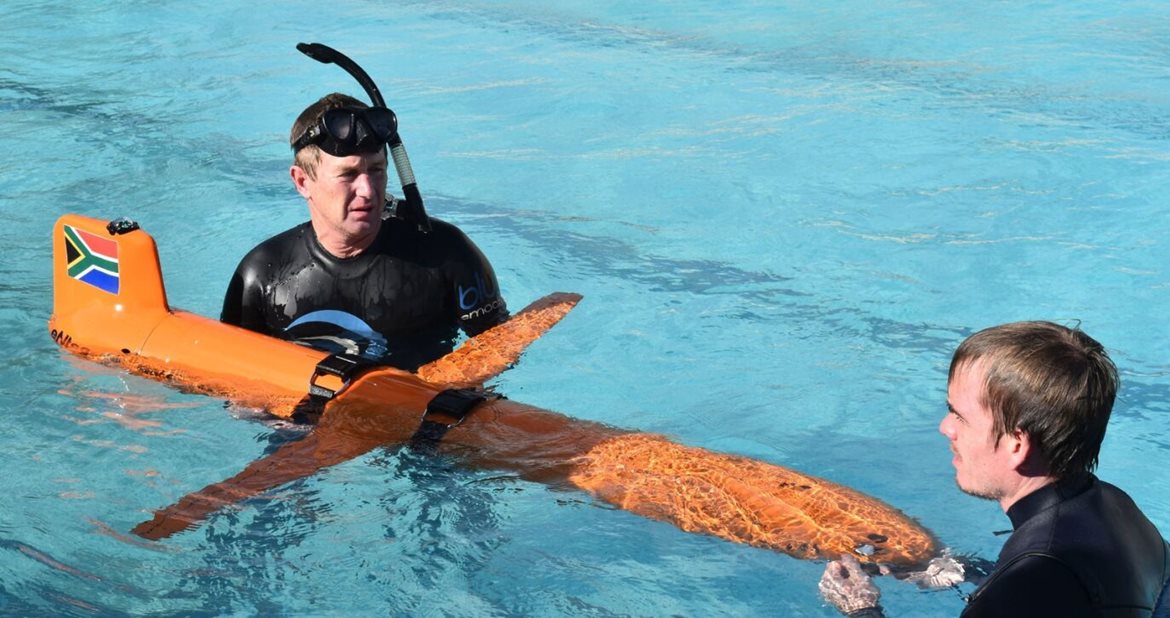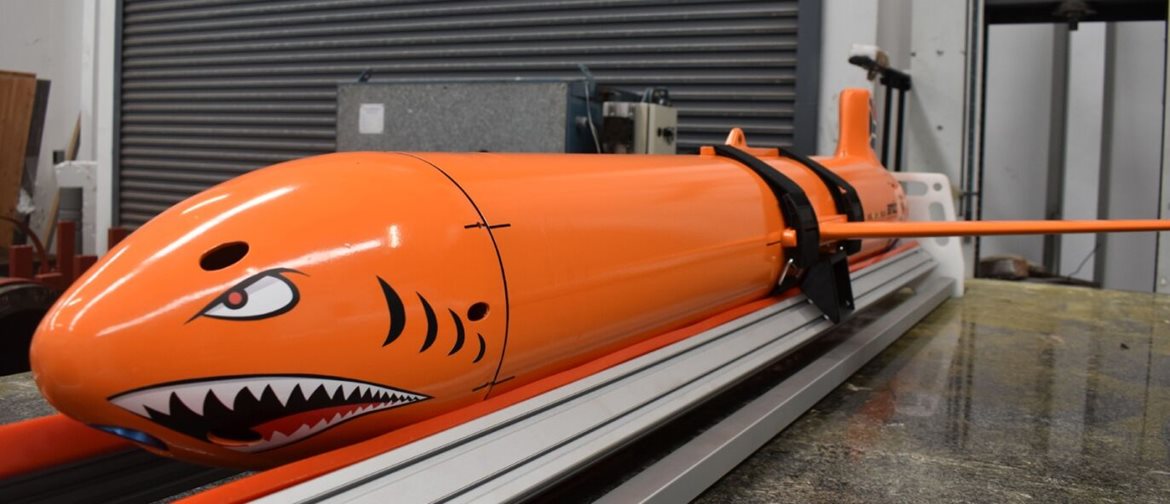eNtsa team’s research platform measures factors affecting pollution

eNtsa engineering director Andrew Young, left, and eNtsa group specialist Hubert van der Merwe test the glider in the pool
Project leader Donnie Erasmus and team members Akshay Lakhani, Elbert Liebenberg, Hubert van der Merwe and Keegan Kroutz have been funded by merSETA in the project initiated by the University’s Advanced Mechatronic Technology Centre (AMTC).
The result of their work is a buoyancy-controlled autonomous underwater vehicle capable of carrying a payload of sensors. These measure parameters such as conductivity (salinity), temperature and pressure (depth), all of which assist in monitoring the state of the ocean.
The project team hope the glider will gather information to enable various research entities to increase ocean monitoring activities and influence legislation with scientific evidence.
These entities can attach the required sensors and data-gathering equipment to the glider, with information collected going towards building a database on various ocean markers.
“If a requirement exists to carry a greater payload, the glider can be scaled for such in a new build,” says Erasmus.

For the greater good
The project supports the work of the South African International Maritime Institute (SAIMI) and the South African Institute for Aquatic Biodiversity (SAIAB).
It also contributes to UN Sustainable Development Goal 14: Life Below Water, which aims to conserve and sustainably use ocean, sea and marine resources. This aligns with the Nelson Mandela University strategic trajectory for ocean sciences, as outlined in Vision 2030.
Erasmus explains the rationale behind the research:
“South Africa has a coastline approximately 3000km long, flanked by the warm Mozambique Current on the eastern seaboard and the cold Benguela Current on the west,” he says.
It is one of the major trade lanes in the world, with many vessels travelling around the southern tip of Africa.
“South Africa has an exceptionally rich marine environment, which supports a large fishing industry and this, coupled with the trade lane, means there is a heightened risk of marine pollution.
“Plastic and marine pollution in turn lead to increasing acidification of the ocean, and this needs to be measured.”
It is therefore vital that parameters such as ocean temperature, pressure and salinity are monitored, enabling scientists to track changes and advise government on the necessary corrective legislation.
The information gathered by the glider can be used in the longer term to fight against ocean pollution.